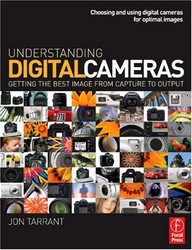Photographic Rendering with V-Ray for SketchUp
暫譯: 使用 V-Ray for SketchUp 的攝影渲染
Brian Bradley
- 出版商: Packt Publishing
- 出版日期: 2014-03-09
- 售價: $1,990
- 貴賓價: 9.5 折 $1,891
- 語言: 英文
- 頁數: 381
- 裝訂: Paperback
- ISBN: 1849693226
- ISBN-13: 9781849693226
-
相關分類:
SketchUp
海外代購書籍(需單獨結帳)
相關主題
商品描述
Turn your 3D modeling into photographic realism with this superb guide for SketchUp users. Through concrete examples, screenshots, and images, you'll learn the practical side to photographic rendering using V-Ray.
Overview
- Clear, step-by-step instructions that teach you how to use the most important tools needed to create photographic renders in V-Ray
- Implement the steps effectively with the help of the SketchUp scene files provided
- Become a better artist by becoming familiar with important lighting and material backgrounds backed up by theory
In Detail
Every Sketch Up user wants to present their designs in the best possible light. What better way to bring them to life than to present them in a genuinely photographic manner? Although the V-Ray render engine has been available to SketchUp users for a good number of years now, the release of the 2.0 Version takes the production of photographic renders in SketchUp to a whole new level.
Using the V-Ray for SketchUp rendering engine through with clear, step-by-step instructions and companion graphics, this guide will give you everything you need to get started. This book has been designed to progressively introduce you to all the V-Ray tools you will need to produce photographic renders using V-Ray.
The journey begins with basics of camera composition, lighting, texturing, and then rendering an interior scene using the V-Ray engine. Using the scene files provided, we will learn how to set up lighting rigs for both daytime and nighttime interior shots, as well as seeing how we can make good use of V-Ray's procedural day-lighting system on exteriors.
As a render will only be as believable as the component parts, we will learn the texturing system in V-Ray and how to use a variety of materials, maps, and layers to produce realistic surface properties for our geometry.
Before producing our final output, we will want to see how we can use the variety of quality control settings in V-Ray, including the Global Illumination and Image Sampling settings to produce a high level of quality for our project.
Add the finishing touches with some compositing and post-production techniques to bring out the full potential of the work you have done.
What you will learn from this book
- Create and control interior sunlight using a V-Ray Spotlight light object
- Discover how to set up Skylight in a variety of ways, including making use of V-Ray's Rectangle and Dome light types
- Work with interior nighttime lighting and real-world light energy values using V-Ray's IES lights
- Produce believable surface properties using V-Ray's material and map system
- Compose and render a shot correctly with V-Ray's camera and output controls
- How to make use of V-Ray’s camera and output controls to compose and render a shot correctly
- Become a better lighting artist in V-Ray by understanding some extremely important lighting theory
Approach
This book is filled with examples explaining the theoretical concepts behind them. Filled with ample screenshots, diagrams, and final rendered images, this book will help readers develop an understanding of photographic rendering with V-Ray.
Who this book is written for
If you are a SketchUp user who would love to turn your favourite modelling application into a 'virtual photography studio', then this book has been designed and written for you. Existing V-Ray users will also find plenty to enjoy and benefit from in this book.
商品描述(中文翻譯)
將您的 3D 建模轉變為攝影寫實的作品,這本針對 SketchUp 使用者的優秀指南將為您提供幫助。透過具體的範例、截圖和圖片,您將學習使用 V-Ray 進行攝影渲染的實用技巧。
**概述**
- 清晰的逐步指導,教您如何使用 V-Ray 中創建攝影渲染所需的最重要工具
- 利用提供的 SketchUp 場景檔案有效地實施這些步驟
- 通過熟悉重要的燈光和材質背景,提升您的藝術水平,這些背景都有理論支持
**詳細內容**
每位 SketchUp 使用者都希望以最佳的方式展示他們的設計。還有什麼比以真正的攝影方式呈現它們更好的方法呢?雖然 V-Ray 渲染引擎已經提供給 SketchUp 使用者多年,但 2.0 版本的發布將在 SketchUp 中的攝影渲染製作提升到全新的水平。
這本指南將通過清晰的逐步指導和輔助圖形,幫助您使用 V-Ray for SketchUp 渲染引擎,提供您開始所需的一切。這本書旨在逐步介紹您所需的所有 V-Ray 工具,以便使用 V-Ray 生成攝影渲染。
旅程從相機構圖、燈光、材質貼圖的基礎開始,然後使用 V-Ray 引擎渲染一個室內場景。利用提供的場景檔案,我們將學習如何為白天和夜間的室內拍攝設置燈光裝置,以及如何充分利用 V-Ray 的程序性日光系統來處理外部場景。
由於渲染的可信度取決於其組成部分,我們將學習 V-Ray 的材質貼圖系統,以及如何使用各種材質、貼圖和圖層來為我們的幾何體生成真實的表面屬性。
在生成最終輸出之前,我們將查看如何使用 V-Ray 中的各種質量控制設置,包括全局照明和圖像取樣設置,以為我們的項目產生高質量的效果。
通過一些合成和後期製作技術為您的作品增添最後的潤飾,充分發揮您所做工作的潛力。
**您將從這本書中學到什麼**
- 使用 V-Ray Spotlight 燈光物件創建和控制室內陽光
- 探索如何以多種方式設置 Skylight,包括利用 V-Ray 的矩形和圓頂燈光類型
- 使用 V-Ray 的 IES 燈光處理室內夜間照明和現實世界的光能值
- 使用 V-Ray 的材質和貼圖系統生成可信的表面屬性
- 使用 V-Ray 的相機和輸出控制正確構圖和渲染畫面
- 如何利用 V-Ray 的相機和輸出控制正確構圖和渲染畫面
- 通過理解一些極其重要的燈光理論,成為更好的 V-Ray 燈光藝術家
**方法**
這本書充滿了範例,解釋其背後的理論概念。書中包含大量的截圖、圖表和最終渲染的圖像,將幫助讀者理解 V-Ray 的攝影渲染。
**本書的讀者對象**
如果您是希望將自己最喜愛的建模應用程式轉變為「虛擬攝影工作室」的 SketchUp 使用者,那麼這本書就是為您設計和撰寫的。現有的 V-Ray 使用者也會在這本書中找到許多樂趣和收益。











